Summary of climate disasters on the planet, October 1–7, 2025
The deadly storm Amy in Northern Europe, the devastating typhoon Matmo in Asia, the mysterious volcanic eruption in Kamchatka, and the snow apocalypse in the Balkans. These and other major events from October 1–7, 2025, are covered in this week’s report.
You will also learn about one of the key, yet still underestimated factors that is currently destroying the bodies of all of us and the entire ecosystem of the planet from within.
Storm Amy
In early October, the deadly storm Amy struck Northern Europe. It became the first major named storm of the autumn season, bringing destructive winds and torrential rain.
On October 3, in Ireland, the raging storm left 200,000 homes without power and paralyzed air traffic. In the capital, Dublin, 115 flights were cancelled. Unfortunately, there were human casualties: a man died in County Donegal.
In the United Kingdom, a new October record low pressure of 947.9 mbar was set. This anomalously “rarefied” atmosphere acted as a powerful engine, intensifying winds across the region to extreme levels.
According to the UK Meteorological Office, on the Isle of Tiree a wind gust reached 154 km/h (95.7 mph).
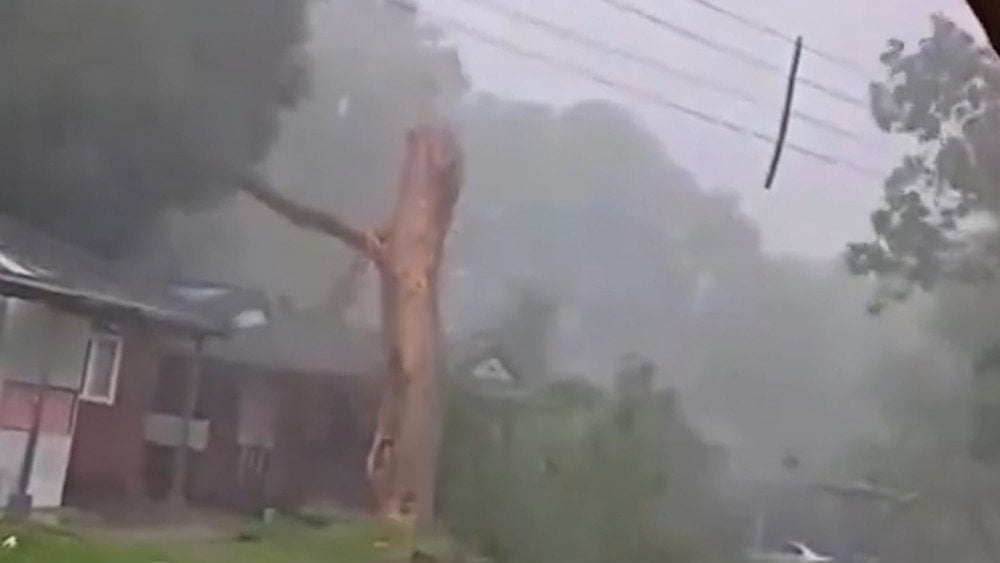
Storm Amy in the UK: a tree broken by a powerful gust of wind
In London, the famous Royal Parks were closed. Across the country, fallen trees blocked roads and railways, and in Scotland, a golf championship was suspended.
In western Norway, more than 170 roads were closed as the storm swept through the region. The powerful winds damaged over 2,500 buildings, tearing off roofs and collapsing walls. A bus overturned on a mountain highway, and in Oslo, a metro train derailed after fallen trees hit the tracks. The municipality of Ørland was left completely cut off following the suspension of ferry services and the closure of all access roads.

Destruction after Storm Amy in Norway
In Sweden, meteorologists declared an orange alert for the western and southern coasts, where hurricane-force gusts and heavy rainfall were recorded.
On October 4, Storm Amy struck the Netherlands with winds up to 120 km/h (74.5 mph), causing widespread destruction. At Amsterdam’s Schiphol Airport, about 150 flights were canceled, and ferry services to the Frisian Islands were completely suspended.
In the Belgian city of Ostend, access to the breakwaters was closed to the public for safety reasons. There were reports of trees falling on parked cars вue to strong winds exceeding 100 km/h (62 mph).
In the Danish city of Skagen, waves up to 4 meters (13 feet) high hurled huge rocks over the pier. In less than 48 hours, the area received more than half of its average monthly rainfall.
On the northern coast of France, at Cap de la Hève, the storm lashed the coast with waves up to 5 meters (16.4 feet) high and wind gusts reaching 131 km/h (81.4 mph). Thousands of homes in the region lost power, and railway service was disrupted. The disaster claimed two lives: one person drowned at sea, and another was killed in a car when a tree fell on it.

Storm Amy struck the northern coast of France
Balkan Peninsula
During the night of October 3, unprecedented downpours caused a catastrophic flood on the southern Black Sea coast of Bulgaria.
The hardest-hit areas were the resorts of Elenite, Sunny Beach, Sveti Vlas, and the town of Tsarevo. In the village of Izgrev, meteorological stations recorded over 410 mm (16.1 in) of rainfall in just 24 hours.
A state of emergency was declared in five municipalities of the Burgas Province.

Catastrophic flooding on Bulgaria’s Black Sea coast
Powerful torrents of water swept numerous cars and vans into the sea, inundated private homes and hotels, and destroyed roads. More than 80 settlements lost power.
The sudden flood claimed the lives of at least four people. Hundreds of residents and tourists were evacuated.
Meanwhile, in the north of the country, severe winter weather set in — rain turned into wet snow, temporarily blocking mountain passes and causing power outages. The national railway company reported significant train delays and cancellations due to fallen trees.
Similar weather anomalies struck neighboring Western Balkan countries as well. The mountainous regions of Serbia saw up to half a meter (1.6 ft) of snow. The storm damaged infrastructure: fallen trees brought down power lines, and roads became impassable. The municipalities of Ivanjica, Medveđa, and Crna Trava in the south and central parts of the country experienced widespread power outages and communication disruptions.

Anomalous snowfall hit Serbia
In Bosnia and Herzegovina, heavy snow blanketed the capital city of Sarajevo, catching residents and tourists by surprise. Unprepared for the sudden frost, visitors who had arrived in summer clothes were forced within a day to search for winter boots and jackets.
Russia
On October 4, reports emerged of a sudden eruption of the Kronotsky volcano on the Kamchatka Peninsula — a volcano that had remained dormant for more than 100 years.
Kronotsky Volcano is located in the northern sector of the Eastern Volcanic Zone of Kamchatka, about 10 km (6.2 mi) east of Lake Kronotskoye and 225 km (140 mi) from Petropavlovsk-Kamchatsky. Its last confirmed eruption occurred in 1922–1923.
According to satellite data and observations by the Kamchatka Volcanic Eruption Response Team (KVERT, Institute of Volcanology and Seismology, Far Eastern Branch of the Russian Academy of Sciences), at 11:50 local time an ash plume rose to an altitude of 9.2 km (30,200 ft) above sea level. The ash cloud stretched for 85 km (53 mi).
The highest — red aviation color code was declared.
Initially, scientists believed that an explosive eruption had begun at Kronotsky, but soon stated that it was more likely a phreatic (steam-driven) emission of water vapor and old ash, probably from the Krokur maar on the slope of Krašeninnikov Volcano.

Phreatic steam emission at Kronotsky Volcano, Kamchatka Peninsula, Russia
Evidence supporting this version was the fact that the ash cloud dissipated within just five hours — much faster than typical volcanic ash plumes, which can linger in the atmosphere for several days — and contained a high concentration of water vapor.
However, on October 5, staff of the Kronotsky Nature Reserve reported that the maar showed no signs of activity or change, thus ruling out the Krokur hypothesis. For now, the origin of the ash emission remains unknown, and local specialists are reluctant to acknowledge that yet another long-dormant volcano may have awakened.
It is worth noting that scientists of the international research community ALLATRA have been warning for more than 10 years about the growing volcanic activity on the planet, particularly in Kamchatka. They have also pointed out the underlying causes behind the sharp and anomalous increase in seismic activity in the region.
Nepal
Although the monsoon season in Nepal (which lasts from June to September) had already ended, starting from October 3, heavy downpours struck the country’s central and eastern provinces.
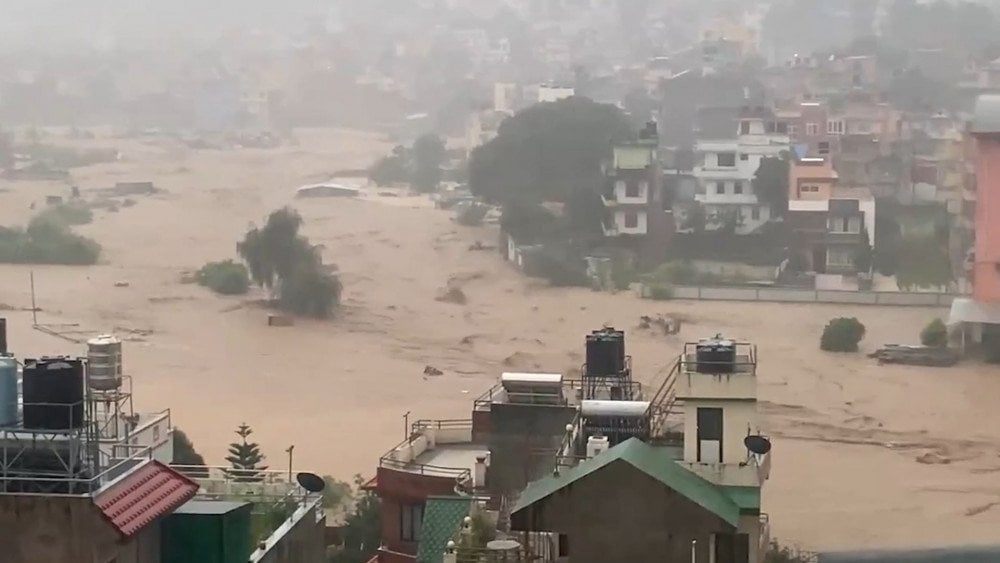
Devastating flood in Nepal: overflowing rivers inundated residential areas
The torrential rains triggered destructive floods and landslides, with the most severe impacts in the provinces of Bagmati, Madhesh, and Koshi.
Water levels in eight major rivers of the country rose above the danger mark. The level of the Kosi River, one of the largest waterways in the region, climbed to more than twice the normal height. A critical water flow level of over 510,000 cubic meters per second was recorded at the Kosi Barrage dam. A high-alert level was declared. All 56 floodgates had to be opened — instead of the usual 10–12 — and traffic across the bridge was restricted to emergency services only.
Overflowing rivers flooded residential districts, forcing thousands of people to abandon their homes. More than 20,000 police officers were deployed for rescue operations.

Aftermath of heavy rains in Nepal — water submerged villages and destroyed homes
Due to heavy rainfall and poor visibility, all domestic flights were suspended.
Major roads connecting Kathmandu, the capital of Nepal, with other regions were closed — some because of landslides, others as a precautionary measure. The disruption occurred just as hundreds of thousands of people were returning to Kathmandu after celebrating Dashain, the country’s main festival, when families traditionally travel to their home villages to visit relatives.
In the Langtang Conservation Area, a swollen river swept away four tourists, who remain missing. Landslides blocked trails leading to Mount Everest, and travelers were advised to use alternative routes.
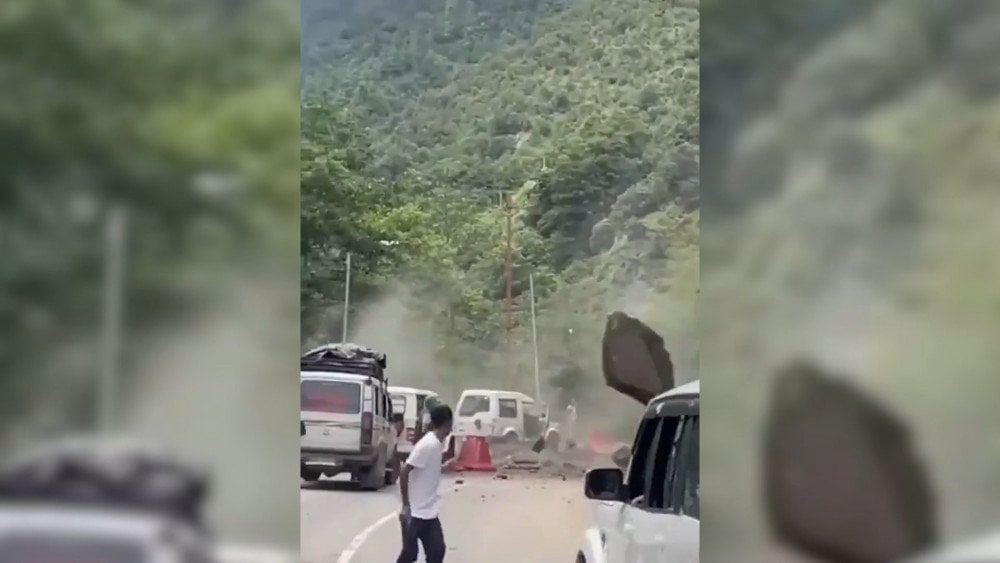
Torrential rains in Nepal triggered landslides and road collapses
In Ilam District, heavy rains caused multiple landslides that destroyed homes and killed at least 37 people. The disaster struck at night, while people were sleeping. One of the tragedies occurred in Ghosh of Ilam Municipality-6 (Ilam District, Koshi Province), where a landslide buried a house. Six members of the same family perished.
Experts noted that most of the affected areas were not previously considered high-risk zones, making the landslides there completely unexpected.
In southern Nepal, three people were killed by lightning strikes.
As of October 6, the disaster had claimed 60 lives nationwide, with 11 people missing.
In neighboring India, in the city of Darjeeling (West Bengal State), continuous rains on the night of October 6 caused the deaths of at least 20 people, the destruction of bridges and roads, and widespread flooding.
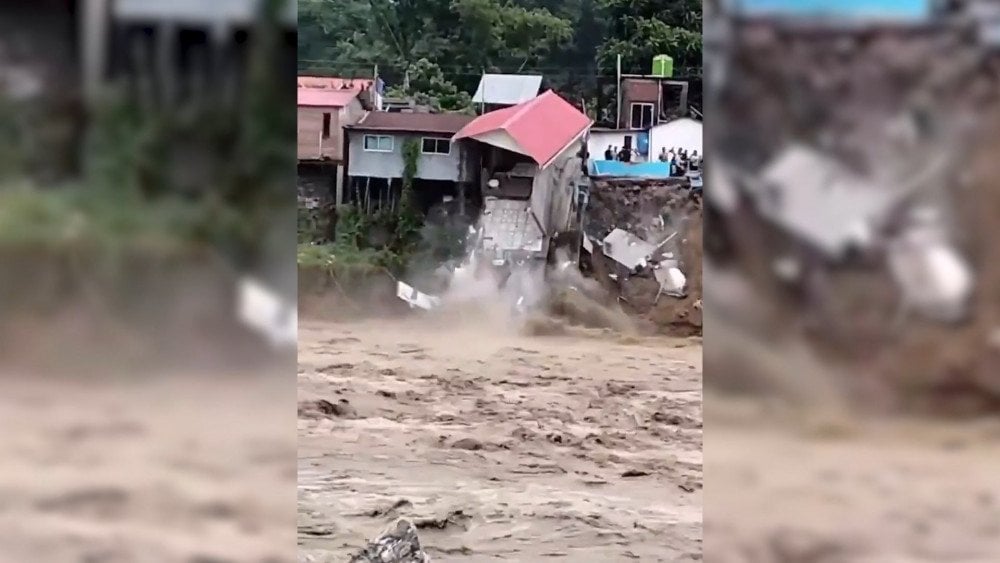
Heavy rains in India led to the collapse of a house
In western Bhutan, unprecedented rainfall triggered an emergency situation at the Tala Hydroelectric Plant. Within just seven hours, the dam’s discharge volume increased more than sixfold, causing water to overflow across the dam.
Typhoon Matmo
Typhoon Matmo struck southern China in early October, timed to coincide with National Day and Mid-Autumn Festival celebrations. This period is traditionally considered the peak of the tourist season, when millions of people travel around the country, which has increased the load on transport and emergency services.
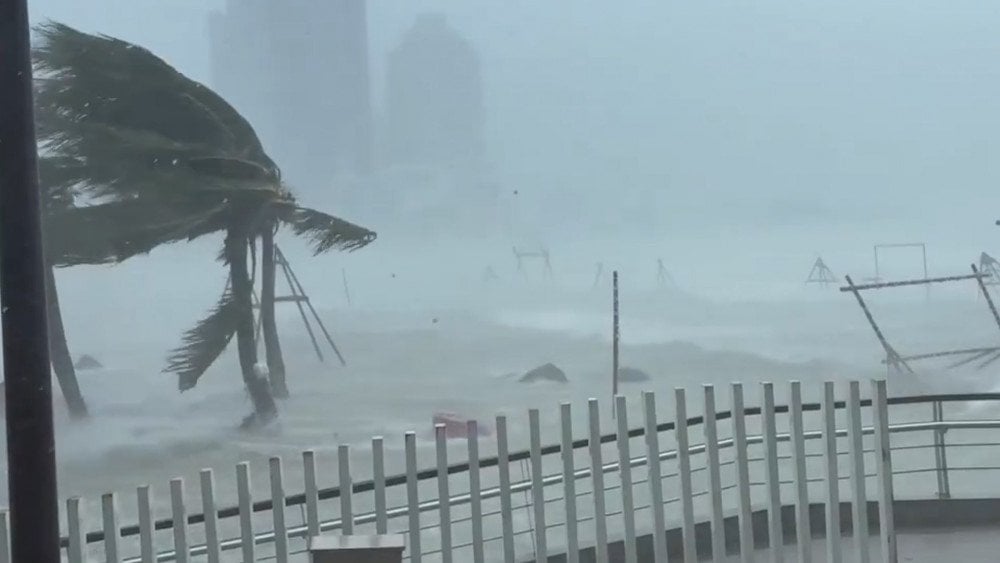
Typhoon Matmo with powerful winds hit southern China
On October 4, the island of Hainan declared the highest Level-1 emergency response.
In Haikou County and the city of Wenchang, maritime transport, industrial operations, and public transport were suspended, and schools and commercial facilities were closed. Haikou Meilan International Airport canceled all flights, and all train services on the island — including the ring high-speed railway — were halted.
On the morning of October 5, Matmo made landfall, bringing winds up to 42 m/s (151 km/h or 94 mph) that tore off metal roofing sheets and uprooted trees.
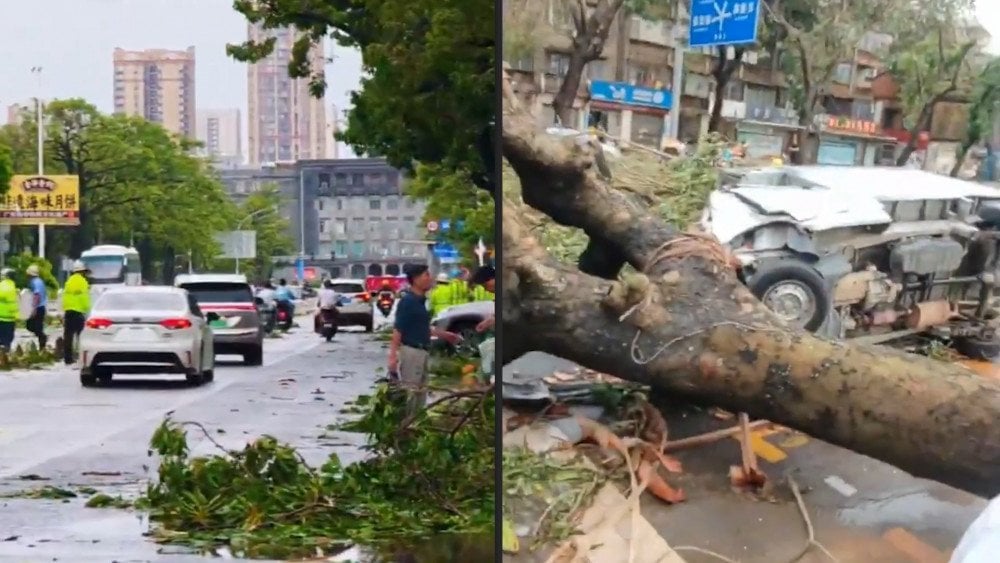
Aftermath of Typhoon Matmo in China
Authorities evacuated more than 200,000 residents and relocated them to temporary shelters.
On the Haidian River, in the Meilan District, a steel cargo ship broke free from its moorings due to storm waves and drifted toward a bridge, endangering its safety. Emergency and maritime services managed to secure the ship and tow it away.
On the evening of October 5, the typhoon struck the southern mainland of China. In Zhanjiang County, Guangdong Province, maximum gusts reached 57 m/s (205 km/h or 127 mph), while in Xuwen County, 453.3 mm (17.8 in) of rain fell between October 4 and 6.

Water poured into homes after Typhoon Matmo, China
Although Matmo weakened as it moved inland through China, by October 6 its circulation brought catastrophic floods and landslides to northern Vietnam: three rivers in the country recorded the highest flood levels in almost 40 years.
In the Cau River, flowing through Thai Nguyen City, the water level rose over one meter (3.3 ft) above the previous record, submerging cars up to their roofs. Many residents were forced to flee their homes.
Social media users posted urgent pleas for help, saying that their relatives and friends in several provinces — Thai Nguyen, Cao Bang, and Lang Son — remained without electricity and food supplies.
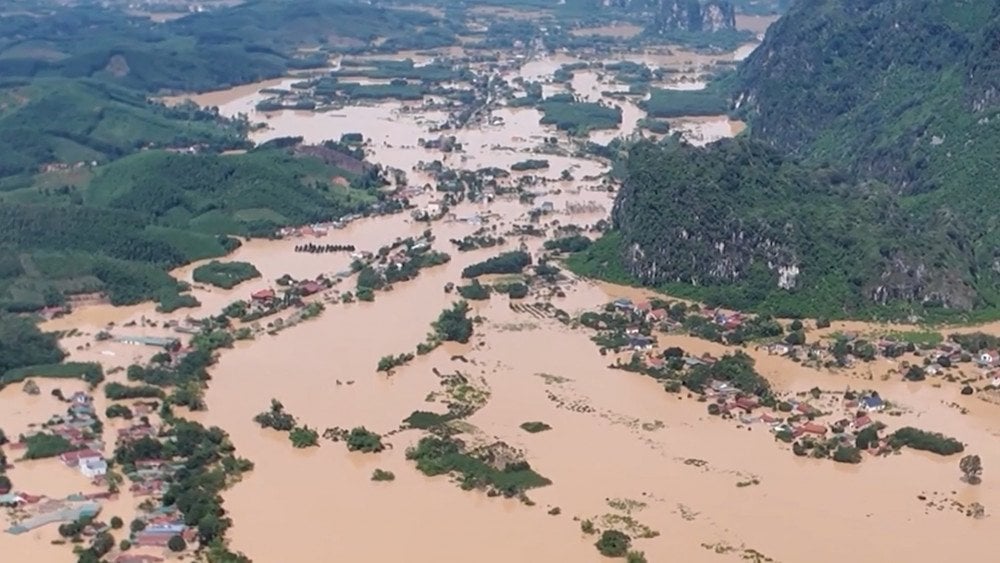
Massive flooding in Vietnam’s Thai Nguyen Province caused by the circulation of weakened Typhoon Matmo
In Thai Nguyen Province, a huge sinkhole opened on National Highway 3B, paralyzing traffic on this vital route.
To deliver more than four tons of drinking water, food, and essential supplies to residents of flooded areas in Lang Son Province, three helicopters were deployed.
At the Bac Khe 1 Hydropower Dam, a 5-meter (16-foot) breach formed, forcing the evacuation of downstream settlements.
In the capital, Hanoi, where many families had only recently finished cleaning up the mud and debris left by deadly Typhoon Bualoi — which had killed at least 56 people and caused over $710 million in economic losses — the new typhoon Matmo brought another wave of torrential rain, with up to 350 mm (13.8 in) recorded in some districts.
Pumping stations operated at full capacity to remove water from 90 flooded areas of the capital.
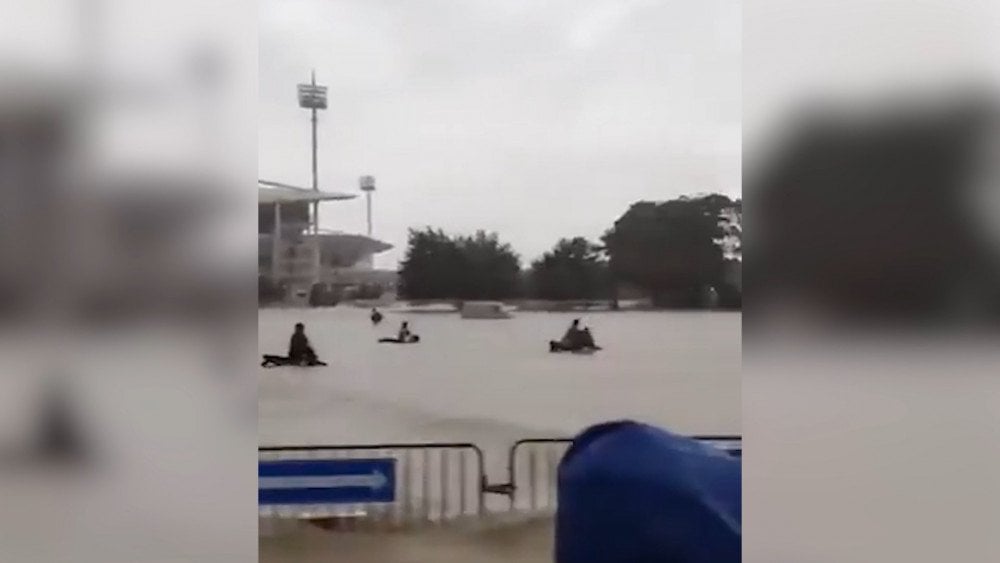
Flooded streets of Vietnam after Typhoon Matmo
One local resident admitted that the situation had become a vicious cycle — it rains, the streets become flooded, people desperately try to survive — and he fears that soon this could become their new normal.
The disaster inflicted enormous damage on the country: nearly 17,000 homes were submerged, over 22,500 hectares (55,600 acres) of rice and other crops were flooded, and more than 200,000 livestock and poultry were killed or swept away.
According to the Ministry of Natural Resources and Environment, as of October 8, 8 people were confirmed dead and 5 were missing as a result of the flash floods and landslides in Vietnam.
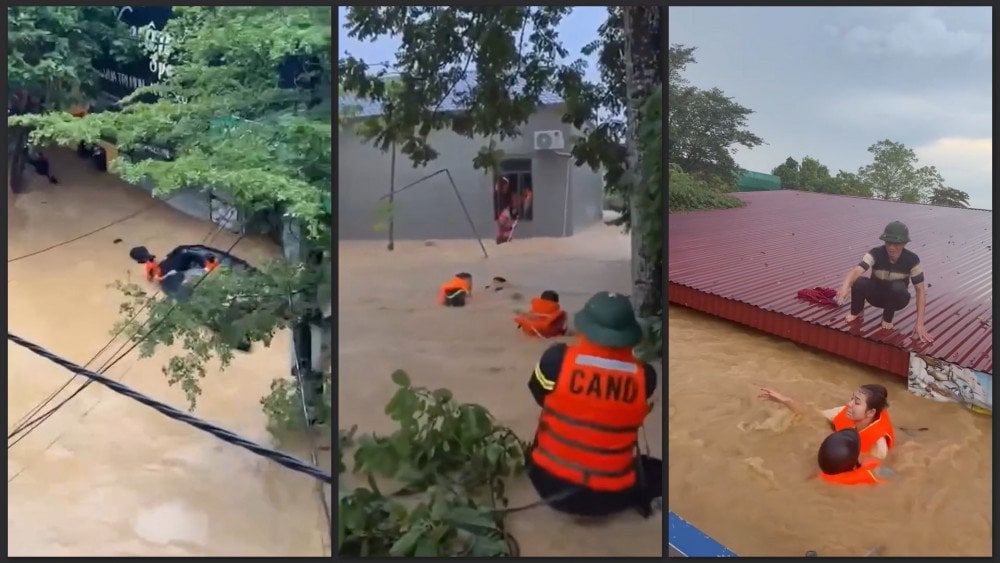
Catastrophic flooding in Vietnam after Typhoon Matmo
Numerous scientific studies cite the sharp increase in atmospheric moisture content due to global warming as the main factor behind such extreme rainfall. Indeed, a warmer atmosphere can hold much more water vapor — and transport it across vast distances.
However, there is another factor that most specialists overlook in their models — and many are unaware of its destructive influence on the planet’s climate system.
It is the micro- and nanoplastic particles present in the atmosphere.
Trillions of these particles aren’t merely harmless inert dust — they can accumulate and retain electrostatic charge for long periods, significantly altering the physical properties of the atmosphere.
As a result, we are witnessing a fundamental transformation of clouds. Plastic particles act as “super-efficient” condensation nuclei, causing clouds to form at lower altitudes. They retain moisture for longer and in larger quantities, and when it finally rains, it falls as catastrophic downpours.
Moreover, plastic in the oceans and atmosphere acts as thermal insulation, disrupting the natural heat exchange between air and water. Consequently, energy fails to dissipate and remains trapped within the Earth’s system.
The most dangerous thing is that this process is self-fueling. As oceans warm, evaporation intensifies, lifting ever more nanoplastics into the atmosphere. The air becomes increasingly charged, and the trapped energy accelerates further warming. More heat → more moisture → more plastic turns into an endless cycle.
Over 20 years ago, the interdisciplinary scientific team ALLATRA began studying nanoplastic pollution and was the first to warn of its threat. Scientists discovered that the most dangerous property of these particles is their ability to accumulate electrostatic charge, which affects both humans and the environment.
However, solving this problem is beyond the capacity of a single research group. Finding an effective solution requires global collaboration among scientists and institutions.
That is why today, public participation is more crucial than ever. There must be a strong societal demand for nanoplastic research. A swift solution can only be achieved when everyone acknowledges the urgency of the issue and takes part in raising awareness.
You can watch the video version of this article here:
Leave a comment